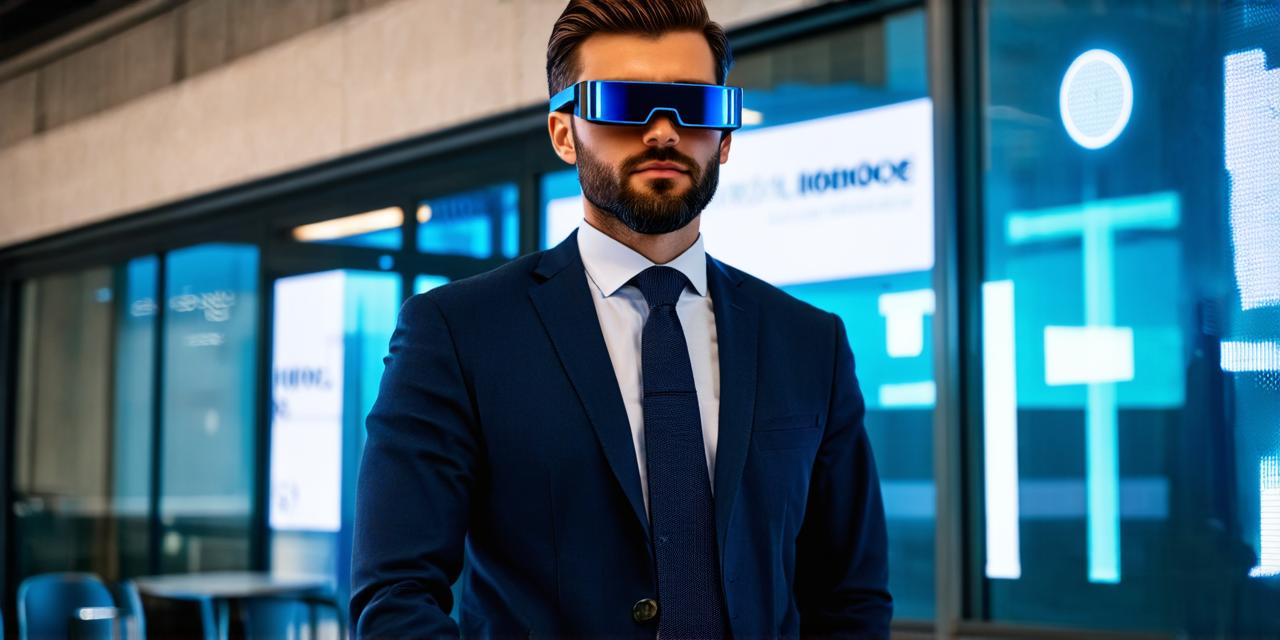What is Augmented Reality?
AR refers to a technology that overlays digital information over the real world. This allows users to see the real world as it is, but with additional visual elements added on top of it. AR can be used in a variety of ways, including:

* In retail, where AR can be used to enhance product displays and provide users with more detailed product information.
* In healthcare, where AR can be used to improve patient outcomes by providing doctors with real-time visualization of patient data.
* In entertainment, where AR can be used to create immersive gaming experiences or to bring movies and TV shows to life in new ways.
AR technology can be accessed through various devices such as smartphones, tablets, headsets, or even specialized wearables. The key benefit of AR is that it allows businesses to provide customers with a more personalized and interactive shopping experience.
How Augmented Reality is Improving Customer Experience
One of the key benefits of AR technology is that it allows businesses to provide customers with a more immersive and interactive shopping experience. By overlaying digital information over the real world, AR can help customers visualize products in a more immersive way, making it easier for them to make informed purchasing decisions.
For example, IKEA’s AR app allows users to see how furniture would look in their home before making a purchase. This not only helps customers make more informed decisions, but also reduces the number of returns, leading to increased customer satisfaction and loyalty. Another example is Lululemon’s AR app, which allows customers to try on clothes virtually, making it easier for them to find the perfect fit. This not only improves the overall shopping experience, but also reduces the number of online returns and exchanges.
AR technology can also provide businesses with valuable data about their customers’ preferences and behavior. By tracking how customers interact with AR technology, businesses can gain insights into what types of products and services their customers are most interested in, allowing them to tailor their offerings to better meet their needs. For example, Sephora uses AR technology to allow customers to see how makeup products would look on their skin before making a purchase. This not only improves the customer experience, but also reduces the risk of customers buying products that do not match their skin tone or other characteristics.
Real-Life Examples of Augmented Reality in Action
There are many examples of businesses using AR to improve customer experience. Here are a few:
* Walmart’s AR app allows customers to see how furniture and decor would look in their home before making a purchase. This not only improves the overall shopping experience, but also reduces the risk of customers buying products that do not fit well with their existing decor.
* Coca-Cola uses AR technology to create interactive packaging experiences for its products. For example, the company’s “Share a Coke” campaign allowed consumers to scan the barcode on a Coke bottle and see personalized messages on their phone screen. This not only increased brand awareness and engagement, but also provided customers with a unique and memorable shopping experience.
* Volkswagen’s AR app allows customers to see how different car models would look in their garage before making a purchase. This not only improves the overall shopping experience, but also reduces the risk of customers buying a car that does not fit well with their lifestyle or preferences.
How Augmented Reality is Impacting E-commerce
AR technology is also having a significant impact on e-commerce. By providing customers with a more immersive and interactive shopping experience, AR can help to reduce the number of online returns and exchanges, leading to increased customer satisfaction and loyalty. In addition, AR can be used to provide customers with additional product information and recommendations, making it easier for them to make informed purchasing decisions. For example, Target’s AR app allows customers to see how different furniture pieces would look in their home before making a purchase. This not only improves the overall shopping experience, but also reduces the number of online returns and exchanges.
AR technology can also be used to create virtual try-on experiences for clothing, makeup, and even jewelry. For example, Warby Parker’s AR app allows customers to see how different glasses styles would look on their face before making a purchase. This not only improves the overall shopping experience, but also reduces the number of online returns and exchanges.
Summary
In conclusion, AR technology is revolutionizing customer experience in a variety of industries, including retail, healthcare, entertainment, and e-commerce. By providing customers with a more immersive and interactive shopping experience, AR can help to improve customer engagement and satisfaction, leading to increased loyalty and sales. As the technology continues to evolve, we can expect to see even more innovative ways that it can be used to improve customer experience and drive business growth.
